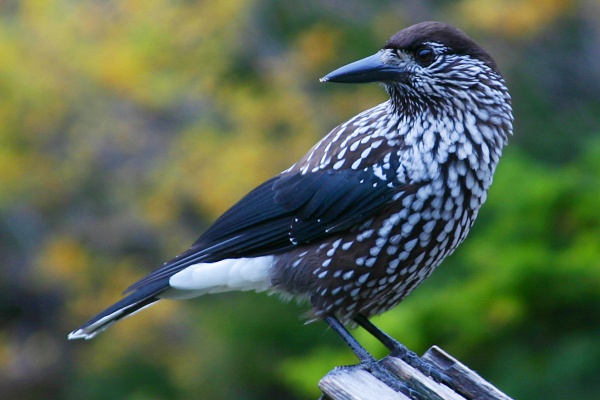Facts About Spotted nutcracker
The spotted nutcracker, also known as the Eurasian nutcracker or simply the nutcracker, is a captivating bird slightly larger than the Eurasian jay. Its brown feathers are adorned with white spots and streaks, making it quite distinctive. Belonging to one of three nutcracker species—alongside the large-spotted nutcracker and Clark's nutcracker—this species was first described by Carl Linnaeus, who bestowed upon it the scientific name Nucifraga caryocatactes, a nod to its nut-cracking habits. There are nine recognized subspecies of this bird, each distributed across Europe and Asia.
Regarding appearance, the spotted nutcracker is a dark brown corvid with a striking look. It features a prominent bill, and white spots, and has a greenish-blue gloss on its wings. Measuring between 32-38 cm in length and boasting a wingspan of 49-53 cm, it is visually captivating. Its call is loud and harsh, akin to that of the Eurasian jay.
The nutcracker's diet primarily consists of pine nuts, seeds from various pines, and hazelnuts. Its bill and tongue are specially adapted for handling and shelling these conifer seeds. The bird also has the ingenious habit of storing surplus food for later use, which aids in the propagation of pine trees. In addition to seeds, it consumes insects, small birds, rodents, and even carrion.
Nutcrackers are monogamous and quite territorial. They nest early in the year to capitalize on stored pine nuts. Typically, the nest is constructed high in a conifer tree, with both parents participating in caring for the young. The species is widely distributed across northern Europe, Siberia, and eastern Asia, with isolated populations in mountain conifer forests in Europe and Asia.
While spotted nutcrackers do not generally migrate, they may venture beyond their usual range if food becomes scarce. The global population is quite substantial, estimated between 800,000 and 1,700,000 individuals in Europe alone. Occasionally, these birds are observed as vagrants in Britain, and there have been larger irruptions into Western Europe, likely due to environmental factors such as cone crop failures.
